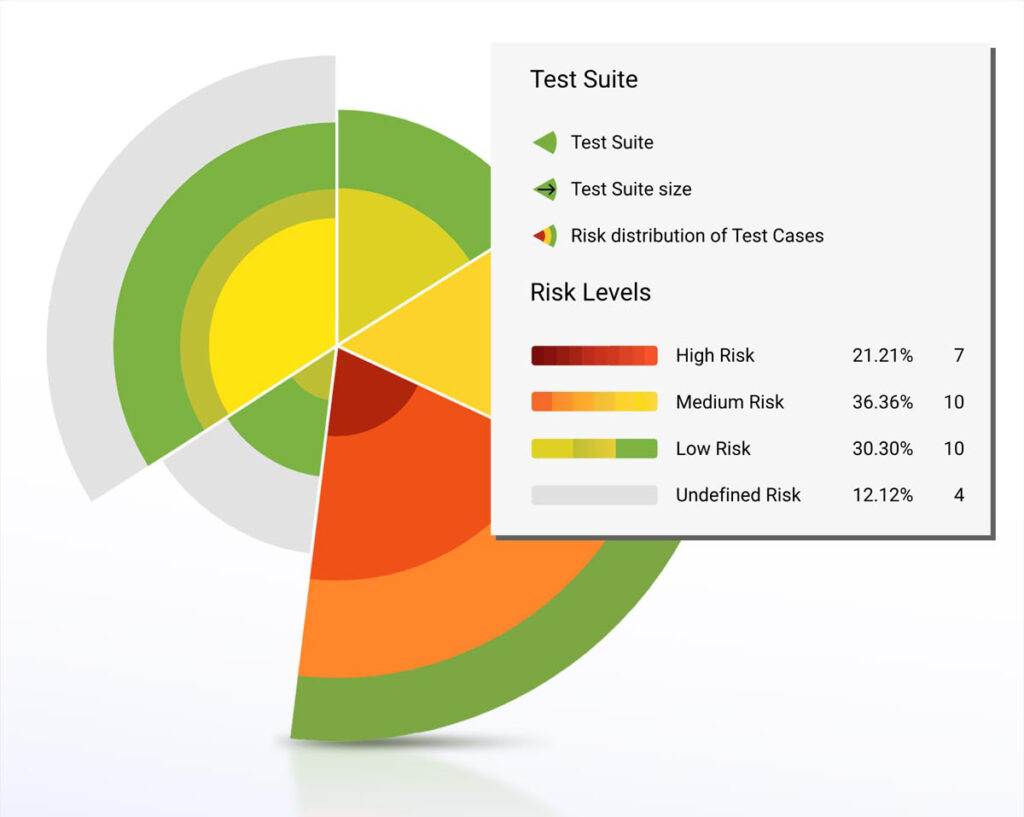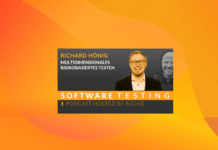Last Updated on 18. November 2025
How do you develop a test management tool that meets the highest standards? This article demonstrates how the Q12-TMT team, through structured collaboration, contemporary tools, and multidimensional quality assurance, created a test tool that meets the needs of critical users and accelerates test processes.
The development of a software test management tool presents a unique challenge. After all, the “Q12-TMT” solution created by mgm technology partners is aimed at the most attentive target group in software development: testers. They notice even the smallest inconsistencies, are sensitive to errors, and react critically to non-intuitive behavior. To ensure Q12-TMT stands out in practical use, the Q12-TMT team applies the highest standards in quality assurance – both organizationally and technically.
Guaranteed Quality in the Test Management Tool: Business Analysts and Developers Working Hand in Hand
The development organization for the Q12-TMT Test Management Tool is structured into two groups:
- Business Analyst Team (BA): Subject matter project representatives work in quality assurance roles closely with the company-wide QA cross-functional team, supported by UI/UX specialists. This team specifies new features, gathers customer feedback, assesses market trends, and jointly determines the content of upcoming releases.
- Dev Team: Comprising architects, front-end and back-end developers, as well as QA experts embedded in development. Architects and developers are responsible for implementing the BA team’s requirements, while QA experts closely monitor the development process, execute tests, and provide early feedback. The close coordination with the BA team results in a seamless integration of conception and implementation.
This collaboration ensures that business requirements are precisely implemented and continuously reviewed.
Which Tools Are Used to Make Test Processes Efficient?
To ensure the quality of Q12-TMT, the team relies on a combination of several tools, each with its own specific focus:
- Q12-TMT Test Management Tool www.q12-tmt.com
Q12-TMT supports and accelerates testing processes in numerous companies across the DACH region. Additionally, mgm also utilizes it for their own purposes: in the software development process.
The mgm dev team uses Q12-TMT for:
- test case creation,
- manual test execution,
- documentation of test results,
- monitoring of test automation, and
- reporting for management and stakeholders.
Additionally, the BA team performs acceptance testing using Q12-TMT. Once the dev team implements a feature, the BA team verifies if it meets the specified requirements and approves it for go-live.
- Teamscale www.teamscale.com
Teamscale supports the mgm Q12-TMT team with code quality analysis and the identification of test gaps—ensuring the code remains maintainable and untested areas are not overlooked. - QF-Test www.qftest.com
For end-to-end test automation, the team relies on QF-Test. This enables realistic test runs to be automated and regressions to be efficiently identified. - mgm ATLAS www.mgm-sp.com/mgm-atlas
ATLAS is integrated into the mgm build pipeline and identifies security vulnerabilities, for example in third-party libraries, allowing risks to be detected early.
How Does Multidimensional Quality Assurance Ensure Usability, Security, and Accessibility?
Beyond using tools, the mgm Q12-TMT team integrates various audits into the tool’s development process:
- Security Audits: External experts regularly conduct penetration tests to identify vulnerabilities early.
- UI/UX Audits: Focused reviews ensure Q12-TMT delivers an intuitive user experience.
- Accessibility Audits: Special attention is paid to accessibility, particularly since it’s used by public sector clients.
These audits ensure that the Q12-TMT Test Management Tool offers a high level of security, user friendliness, and inclusiveness.
Why Is Risk-Based Testing (RBT) a Success Factor for Test Teams?
A central concept within the Q12-TMT Test Management Tool is Risk-Based Testing (RBT). Features are assessed based on their risk to day-to-day business and prioritized for testing. This allows test teams to maximize coverage where it offers the greatest value, while ensuring efficient resource use. Further information on risk-based testing can be found in the RBT whitepaper.

Conclusion: Why Does Q12-TMT Meet the Expectations of the Most Demanding Testers?
Quality assurance for Q12-TMT Test Management Tool takes place on multiple levels: from structured team collaboration, the use of specialized tools, to external audits. This combination is essential for meeting the high demands of Q12-TMT users—the test professionals who work with the tool every day.
Start using Q12-TMT Test Management Tool for Free Now!
The Q12-TMT Test Management Tool provides professional software test management, bringing transparency and speed to test management. Developed by experts for experts—with intelligent workflows that noticeably reduce testing effort.
Get started for free and try out Q12-TMT Test Management. Connect with Oliver Storch on LinkedIn for deeper insights into the topic!







